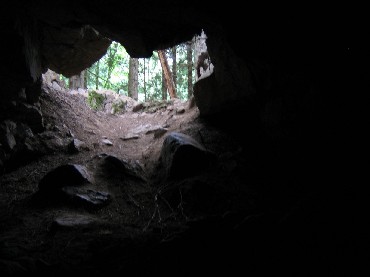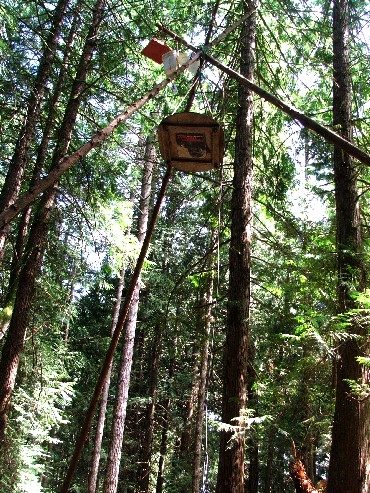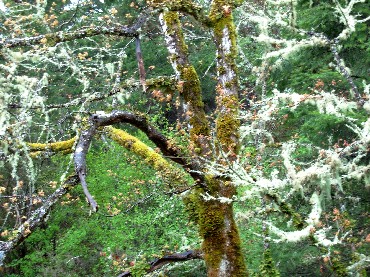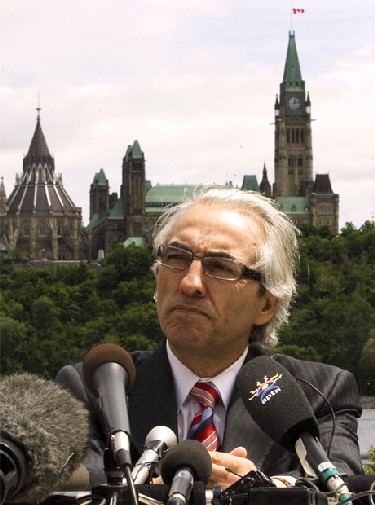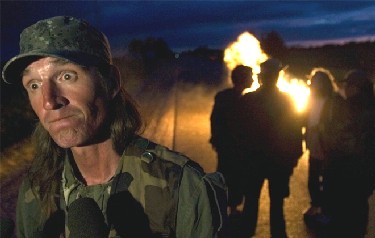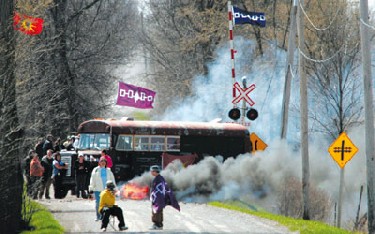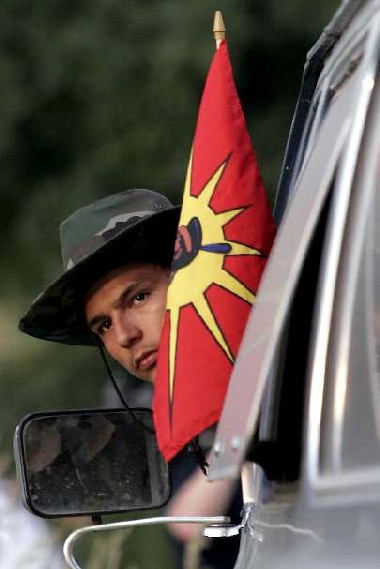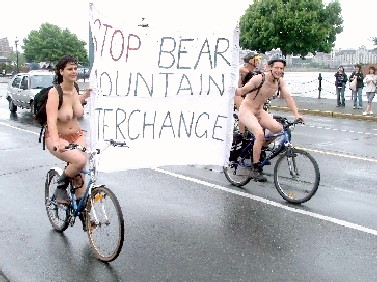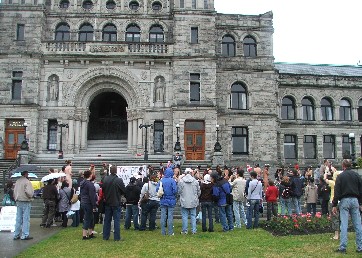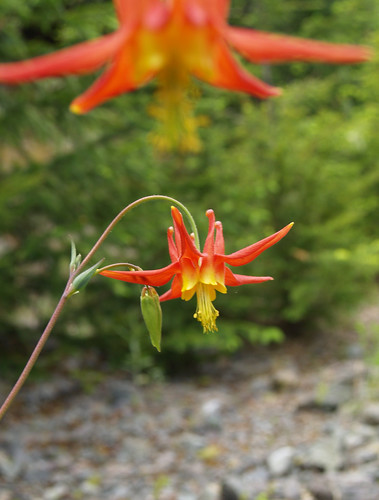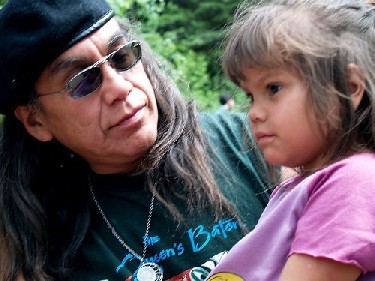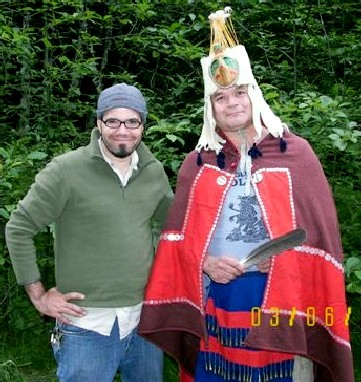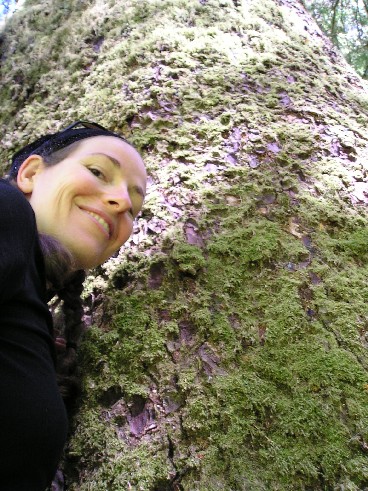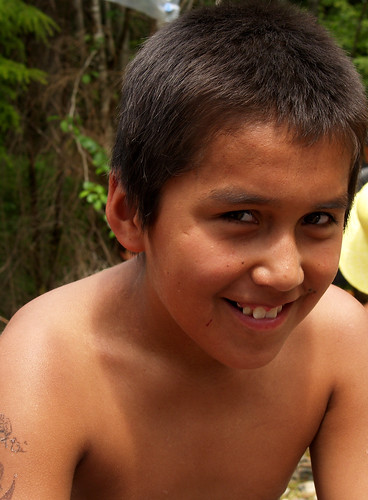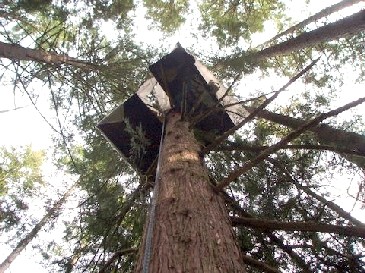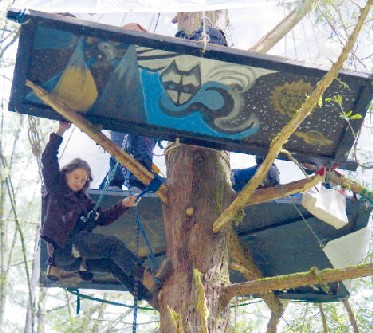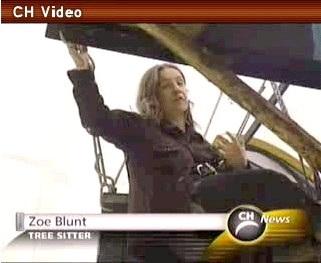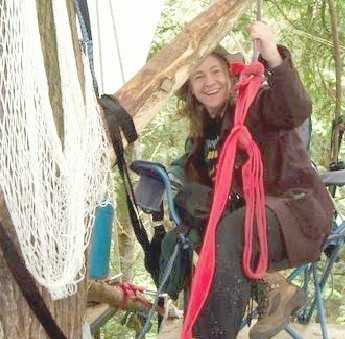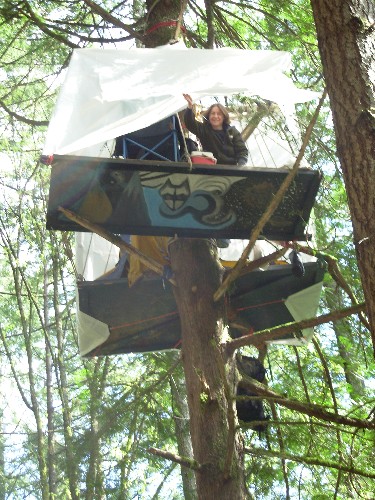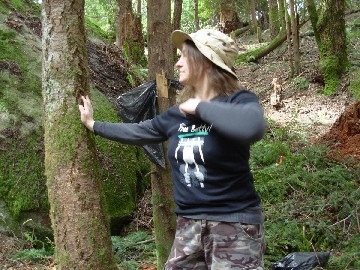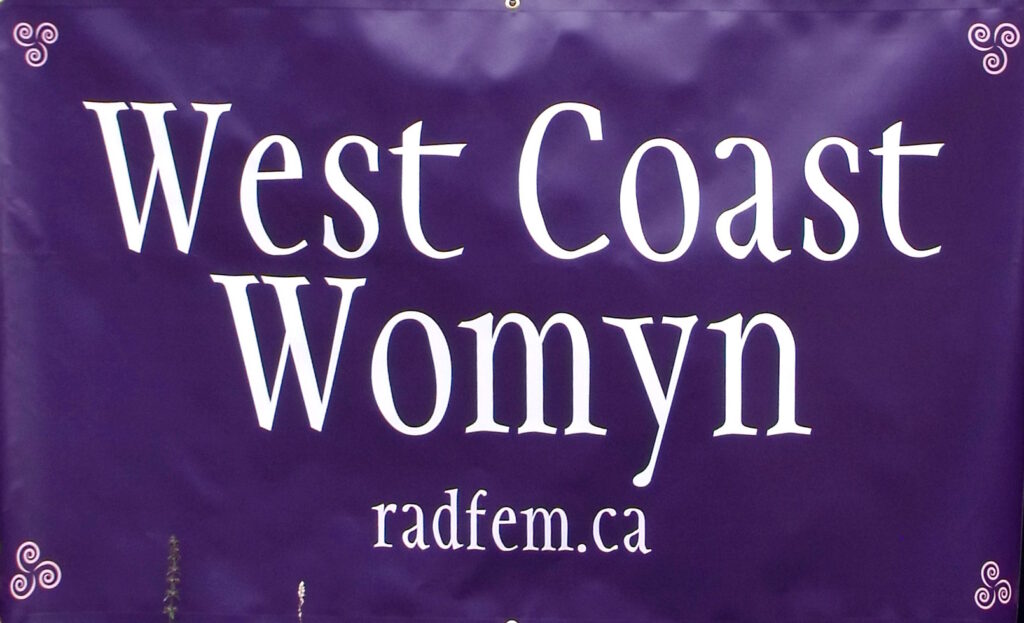April 9, 2007
Deep ecology author Derrick Jensen discusses bringing down western civilization and reactions to his latest book Endgame: the Problem of Civilization.
In his most recent book, deep ecology author Derrick Jensen compares western civilization to an abusive family, where violence is a constant threat and the victims feel helpless and dependent on the abuser. He urges his readers to bring down this culture by any means necessary. His ideas are controversial, and Jensen confesses he gets “hate mail from pacifists.” Zoe Blunt spoke with Jensen by phone from his home in Crescent City, California earlier this month.
Blunt: Your book Endgame has been getting a lot of attention. You write that “civilization and the civilized continue to create a world of wounds.”
Jensen: Yeah, where do you want to start? Ninety percent of the large fish in the oceans are gone. The passenger pigeons are gone. The great auks are gone. The oceans are being murdered. There’s dioxin in every mother’s breast milk. Indigenous people have been dispossessed, had their land stolen and been forced to enter this economy, forced to enter this system. People all around the world have been enslaved. So, what wounds would you like to talk about?
Lets talk about – Mary Daly said there’s only one religion in the world, which is patriarchy. Robin Morgan wrote about something she calls “the democracy of fear,” which is that everywhere in the world, any woman could be walking alone at night and if she hears footsteps behind her she has reason to be afraid. So there’s a huge wound right there.
We could talk about the wage economy. We could talk about the fact that there are more slaves on the planet right now than came across on the middle passage, using a tight definition of slavery. That’s not even including wage slaves or anything else.
Blunt: You’ve been getting a lot of response to your book, and not all of it positive. Why is it so difficult for some people to contemplate the end of civilization?
Jensen: I think that one of the reasons is we identify more closely with being civilized beings than we do with being animals who need habitat. Another way to talk about that is if your experience is that your food comes from the grocery store and your water comes from the tap, you’ll defend to the death the system that brings those to you because your life depends on it. If, on the other hand, your food comes from a landbase and your water comes from a river, then you’ll defend to the death that landbase and that river, because your life depends on them.
Like any good abusive system, this system has made us dependent upon it. And another important thing about the whole question of abuse is that one of the things that happens within any abusive dynamic, and that’s true whether we’re talking about an abusive family or an abusive culture, is that everything – and I mean everything – in this dynamic is set up to protect the abuser. And so every member of an abusive family comes to identify more closely with the abuser’s feelings than they do their own.
If you look at all the “solutions” proposed for global warming – anywhere, all of them – what do they take as a given? They take as a given industrial capitalism. That’s the baseline. The baseline is not the real world, the physical world, which must be the baseline for all of our decisions because without a world, we don’t have anything.
Most of the complaints about Endgame, and most of the hate mail I’ve gotten about Endgame, frankly, has not come from people who think that civilization will go on forever. Most of it’s come from pacifists and lifestyle activists, and one of the jokes I’ve started making is that I should write a version of Endgame called “Endgame for Pacifists,” which would be a thousand blank pages with one in the middle that says “sometimes it’s okay to fight back.” Because it’s the only thing they’re hearing in the entire book, or the only thing they’re reading in the entire book. All the other analysis goes by the wayside. They see that, it triggers them, and they can’t think about anything. And I’ve gotten a lot of hate mail from both pacifists and also from lifestyle activists who get very upset when I suggest they have to do more than just live simply.
Blunt: You’ve written about hope in regard to reforming civilization, and you said hope is harmful –
Jensen: I don’t want to reform civilization, by the way.
Blunt: No. So you’re saying hope is harmful, when it comes to our goals.
Jensen: Okay, let’s back up a second. What are our goals? What are your goals? What do you want?
Blunt: You’ve talked about – and I agree with this – a world where every year there are more salmon, where there is more old-growth forest, where there are more spotted owls, for example. We’re about to lose the last of our spotted owls in Canada. If we want to stop that, what do we do?
Jensen: Okay, that’s great. The first thing we have to do is figure out what we want. And the next thing we have to do, I think, is figure out what it takes for those creatures to survive. And it’s pretty fundamental. I mean, what they need is habitat. Okay, end of conversation, talk to you later!
What do salmon need? They need for dams to be removed. They need for industrial logging to stop. They need for industrial fishing to stop. (I’m not saying they need for fishing to stop; they need for industrial fishing to stop.) They need for industrial agriculture to stop, because of runoff. They need for global warming to stop, which means they need for the industrial economy to stop. They need for the oceans not to be murdered. And each of those is pretty straightforward.
The problem is that so often, when people say, “What will it take for salmon to survive?” what they mean is, “What will it take for salmon to survive, given that we’re not going to remove dams, we’re not going to stop industrial logging, we’re not going to stop industrial fishing?” It’s the same. What do spotted owls need to survive, given that we’re going to allow all of their habitat to be clearcut?
It’s like, once again, what is primary and what is secondary? And what’s always considered primary is this culture and this culture’s exploitation.
And now, at long last, to your question of hope. One of the things we need to do first is – there’s false hope. I think it needs to be eradicated. False hope is one of the things that binds us to unlivable situations. That’s one of the reasons why, like I mentioned earlier, that at every step of the way it was in the Jews’ rational best interest to not resist [the Nazis]. There’s a false hope that if they just go along, they won’t get killed. And my mother – one of the reasons she stayed with my father is because of the false hope that he would change.
And what are the false hopes that bind us to this system? I mean, does anyone really think that Mac-Blo is going to stop deforesting because we ask nicely? Does anyone think that Monsanto is going to stop Monsanto-ing because we ask nicely? Oh, if we could just get a Democrat in the White House, things would be okay!
I was bashing hope at a talk I did a couple years ago, and someone in the audience interrupted to shout out, “What is your definition of hope?” I didn’t have one, so I asked them to define it. And the definition they came up with was that hope is a longing for a future condition over which you have no agency.
But I’m not interested in hope. I’m interested in agency. I’m interested in us finding what we love, and figuring out what it will take to defend our beloved, and doing it.
Blunt: Derrick Jensen, you’re speaking in Vancouver on April 18th, and the title of your talk is “Taking Action in a Culture of Violence.” Tell us what we can expect from that.
Jensen: Well, what I’ll talk about primarily is a question: Do you believe this culture will undergo a voluntary transformation to a sane and sustainable way of living? I ask that question to people all over the country and no one ever says “yes.” And if you don’t believe that this culture will undergo a voluntary transformation to a sane and sustainable way of living, what does that mean for our strategies and for our tactics? The answer is, we don’t know, and the reason we don’t know is because we don’t talk about it, and the reason we don’t talk about it is because we’re all so busy pretending that we have hope.
Blunt: Do you have any new books in the works?
Jensen: Oh, my gosh. Okay, so Endgame came out about a year ago. I’ve got another book coming out in a month or so, which is an anti-zoo book. It’s written with Karen Tweedy Holmes, the photographer, and that’s coming out through [publisher] No Voice Unheard. Then I have a book coming out next January from Seven Stories [Press], called “As the World Burns: Fifty Simple Things You Can Do to Stay in Denial.” That’s a graphic novel done with Stephanie McMillan, who does the wonderful cartoon “Minimum Security.”
And right now I’m writing a book about shit – whoops, I’m writing a book about feces, and how this culture has taken something that used to be a tremendous gift to the landbase and turned it into something poisonous. And how, in a sustainable culture, all of the products are helpful to the land. There’s no such thing as waste. And how, if I defecate, somebody else – slugs or flies or the soil itself – eats it. And this culture produces wastes that are not useful, but in fact harmful.
Blunt: That’s a lot of work that’s going to be coming in the future.
Jensen: Yeah. You know, I’m actually thinking that I’m really tired. And it’s not just because I’ve been touring so much. I think I might take a couple months off this summer. Because for one, I’ve been really sick the last couple of years. And also, I’ve written thirteen books, I think, in the last six years. I remember I was thinking, “When I finish Endgame, I’m going to take a break.” I finished it in November of whatever year that was, and then in December I wrote that anti-zoo book, and then the next year I wrote those two novels. And it just goes on.
I haven’t taken a break in years. And you know, I go back and forth because things are so, so desperate. And I just – I can’t stop. There’s a couple reasons I can’t stop. One is because things are so desperate and they’re getting worse every day. And another reason is because I’m so in love. I’m in love with [the land] and that’s what you do. If you love someone and they’re being hurt, they’re being killed, you do what you can. You don’t rest.
And then, also, I’m very aware of my own mortality. I don’t want to die with eight books still in me. You know? I don’t want to die and look back at the very last second and say, “I wish I could’ve done more. I wish I could’ve done this much more to help the salmon. I wish I could’ve done this much more to help the redwood trees.”
When I die, I want to be spent. I want to feel like – You know there’s some days when you work really, really hard, and then you go to sleep and you are so, so ready to go to sleep? That’s how I want to die. It’s like, you know what? I’m done. There’s nothing else I can do.
Derrick Jensen presents “Taking Action in a Culture of Violence” in Vancouver, BC on April 18 at 7 pm, Langara College, Room A130. He will be speaking at Elphinstone Secondary School in Gibsons, BC on April 19 at 7:30 pm. Tickets are $15, students $12. For more information, call 604-253-6281 or visit www.derrickjensen.org.
